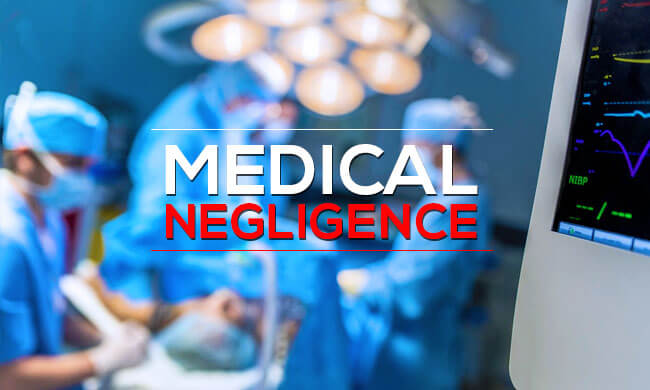This article is written by Adv Priscilla Rodrigues, pursuing a Certificate Course in Advanced Civil Litigation from LawSikho.
Table of Contents
Introduction
One of the most respectable professions in the world is the medical profession.
Commercialisation and manipulation of the medical industry, however, has made it like every other enterprise and the medical profession is being gradually motivated by the motive for benefit rather than that of service. Such a circumstance has given rise to immoral and negligent activities. Medical negligence is a mixture of two words i.e. Medical and Negligence. The word Negligence has not been adequately defined, but it can be seen as an act that a person carelessly commits, resulting in foreseeable harm to the other.
Recently, the Indian population has become increasingly conscious of the rights of patients. The recent spiral of medical or institutional liability lawsuits seeking compensation for distress caused by medical negligence, vitiated arrangement and violation of confidentiality in conjunction with the relationship between doctor and patient is a clearly obvious development.
The famous Latin Maxim, “ubi jus ibi remedium” means “where there is a wrong, there is a remedy”. This maxim shows that a corresponding remedy for the infringement should be given if the statute has laid down a right.
In any legal system one of the human rights known traditionally is the right to a remedy. The idea that rights must have remedies is old and revered. Remedies are, thus, an operational promise that a duty will be upheld and executed. In every legal system, the primary role of ‘remedies’ is to resolve the illegality and act as a credible warning against future offenders. Thus, the integrity of every legislative structure depends on the success of the remedial processes by which it can be remedied. Every legal structure, whether domestic or foreign, therefore allows for a corrective measure to enforce the rights and duties defined or accepted by that system.
Chief Justice Marshall in Marbury v. Madison stated “It is a general and indisputable rule that where there is a legal right, there is also a legal remedy by suit or action at law whenever that right is invaded…. [F]or it is a settled and invariable principle in the laws of England, that every right, when withheld, must have a remedy, and every injury its proper redress.”[1]
Thus, we can see that Negligence comes under the ambit of offense under the Law of Tort, the Indian Penal Code 1860, Indian Contracts Act, Consumer Protection Act and many more.
Scope and ambit of Consumer Protection Act, 2019
The scope of the Consumer Protection Act is quite expansive. The Consumer Protection Act (CPA) aims to protect and encourage the interest of customers by quickly and efficiently addressing their concerns. This Act was passed by the Government of India and is extended to the whole of India. This Act was introduced in order to protect the rights and interests of the consumers.[2]
Section 2(7) of the Consumer Protection Act 2019 defines the term Consumer as an individual who buys any goods for a consideration that has been paid or promised or partially paid and partially promised, or under some deferred payment scheme, and covers any consumer of such goods other than the person who purchases such goods, paid or promised for consideration, or partly paid or partly promised, or partly promised for consideration, or where such use is made with permission, or under some scheme of deferred payment, of such a person, but does not include a person for whom such goods are obtained for resale, or for some commercial reason, and who hires or uses any services for compensation paid or agreed or partly paid and partly promised or under any delayed payment scheme and includes any beneficiary of such services other than the individual who hires or uses the services for consideration paid or promised or under any deferred payment scheme where such services are used in combination with the customer. This description is sufficiently broad to include even a patient who is clearly promising to pay.
Section 2(11) of the Consumer Protection Act 2019 defines the term deficiency in service as any error, inconsistency, failure or insufficiency in the standard, manner or method of performance which, for the time being, is needed to be maintained by or under any law or has been committed to be performed by an individual pursuant to a contract or otherwise in conjunction with any service, any act of negligence or omission or commission on the part of the individual concerned that triggered damage or injury to the person concerned; or a deliberate concealment of relevant information by any such person. [3]
What falls within the purview of Medical Negligence?
It is an established legal principle that a medical practitioner needs to carry an appropriate degree of expertise and experience to his assignment and must show an appropriate degree of care. What the law demands is not the very highest nor the very lowest degree of care and competence assessed in the context of instances in each case.
Let us now see what falls within the purview of Medical Negligence:
- The responsibility of the doctor to look after the patient with care: A reasonable degree of care and ability implies that the level of care and skill that would be exercised in the circumstances in question by a” reasonable member of the profession who professes to have such abilities. If the physician or a specialist may not attend to a patient who is admitted in an emergency or under his supervision and the patient dies or becomes the victim of consequences that could have been prevented by the doctor’s due care, the doctor could be held responsible for medical negligence.
- An injury caused by the negligence of the doctor: A doctor’s responsibility exists not when the patient has sustained any injury, but when the injury has arisen from the doctor’s conduct, which has slipped below that of reasonable care. In other terms, the doctor is not responsible for any injury suffered by the patient. He is responsible only for those that are the result of a violation of his duty. Therefore, the patient must establish that he or she has sustained injury that would not have occurred in the absence of negligence. The negative outcome alone is not wrongdoing. The patient has to prove that the accident was caused by negligence. [4]
- Failure to diagnose or misdiagnosis: A lot of medical negligence is based on failure to detect and misdiagnose an illness or injury. Misdiagnosis alone is not inherently medical malpractice, but misdiagnosis or inability to detect must result in insufficient medical care, delayed diagnosis, or no treatment, resulting in a deterioration of the medical condition of the patient in order for the malpractice to be actionable. A case of misdiagnosis can include an incorrect diagnosis, a missing diagnosis, a delayed diagnosis, or a failure to detect complications that alter or exacerbate an established condition.
- Surgical errors or surgery at the incorrect location: Perhaps the most drastic, noticeable and damaging of all surgical errors is wrong side surgery. It is, arguably, the mistake that most surgeons fear. Research shows that the incidents that contributed to the removal of the wrong kidney was caused due to many factors which could have been avoided, like misunderstanding with the house-officer suggesting, on the admission slip, the wrong side. This information was then moved to the diary of the surgeon.
- Completely ignoring or not taking the necessary history of patients: The doctors sometimes ignore the patient’s previous history; they forget to check if the patient is allergic to certain drugs which can in some cases cause great injury to the patients.
Liabilities faced by doctors in cases of negligence in India
The Kunal Saha’s AMRI (Advanced Medical Research Institute) case generally referred to as the Anuradha Saha Case was filed in 1998 due to medical negligence of three doctors at the AMRI hospital; Dr. Sukumar Mukherjee, Dr. Baidyanath Haldar, and Dr. Balram Prasad and the hospital itself.
The facts of the case are that Mrs. Saha suffered from a drug allergy. At the hospital the three doctors administered a drug when she went to this hospital, which further exacerbated her condition and she passed away. The Supreme Court handed down the judgement in 2013 and directed the complainant to obtain compensation of 6.08 crore. The scope of medical negligence in India was widened by this very case and gave it a new dimension.[5]
In the case of Meenakshi Mission Hospital and Research Centre vs. Samuraj and Anr., I(2005)CPJ33(NC), the National Commission found the hospital guilty of negligence on the pretext that the name of the anesthesiologist was not listed in the operation notes, while two anesthesiologists administered anaesthesia at 10 a.m. and 10.30 a.m.The child was pulseless and the doctor who administered anaesthesia was not produced before the Commission. Two progress cards on two separate papers about the same patient were made. The hospital was unable to explain what the two anaesthetists were doing in the Operation theatre during that time. The hospital was made responsible for all that happened in the hospital and was made liable for paying the compensation and cost. It is important to note that the District Forum considered the hospital negligent in this case and awarded a penalty of Rs 3 lacs and Rs. 2000/- as costs.[6]
Comparative study of medical malpractice law in the United States and Canada
In the United States, medical negligence law has historically been under the jurisdiction of individual states and not of the federal government, unlike several other nations. In order to seek monetary compensation for medical negligence, a patient must show that an under-standard medical treatment has resulted in the injury claimed. The indictment of medical negligence must be submitted in a timely manner; this constitutionally defined period is called the “Statute of Limitation” which varies from each state. The court measures the monetary damages that will be paid in compensation after the injured party has proven that negligence contributed to injury. Damages take into account both real economic damages, such as loss of income and potential medical care expenses, and non- monetary damages, such as misery and pain. Medical malpractice insurance is typically carried out by physicians working in the United States to cover themselves in the event of medical error and accidental injury. In certain cases, such insurance is needed as a condition of hospital privileges or to be employed with a medical group.
The Canadian medical negligence framework is similar to that in the United States, but less lawsuits have been filed and the rate of medical negligence lawsuits has gradually decreased since 1997 as the Canadian law appears to prohibit medical malpractice cases. Physicians and hospitals are strongly protected by medical liability insurance, such as Canadian Medical Protective Association. The Supreme Court has put a stop to pain and suffering damages. The time-limits or statutes of limitations for filing lawsuits for infringements of medical malpractice laws in Canada are provincial-specific, with most provinces having laws that forbid allegations after only two years after the patient-doctor relationship has been formed or the harm has finally begun to occur.
Principle of Res Ipsa Loquitur
It has usually been found that, in most cases of negligence, the onus of proof rests with the Plaintiff, however during medical negligence, it is difficult for the Plaintiff to prove the negligence caused to him by the offender. The medical field is considered complex to be understood by a majority of patients, and most patients are unconscious when the act conducted on them tends to cause damage. It is also impossible to show proof that the harm caused to him is due to the doctor’s negligence. It is here that the Latin Maxim “Res ipsa loquitur” which is a doctrine in the Anglo-American common law that means “the thing speaks for itself”. The court will imply negligence from the very existence of an accident or injury in the absence of clear facts about how a suspect acted.
It serves as an evidentiary rule for any personal injury committed on a person. By virtue of the doctrine of Res Ipsa Loquitur, the Plaintiff only needs to show some circumstantial proof or evidence which would transfer the onus of proof to the defendant in order to claim that the conduct of the defendant was not the conduct of negligence. Circumstantial evidence contains some details which lead to wrongdoing on the part of the defendant as a pure logic which will not need to be discussed or proven before the court.
Challenges in proving medical negligence
Since professionals have been regulated by consumer protection legislation, medical practitioners have also felt its impact. It’s different from any other kind of negligence.
Within consumer protection legislation, medical negligence is another type of service deficiency. It is quite analogous to accountability in the law of tort. However, there is a greater and wider obligation in this case as the inability to exercise skill and care, as is generally required by a medical practitioner, comes under the ambit of the consumer Protection Laws.
It gets extremely challenging to prove negligence as most patients are unconscious when the act is conducted on them. It is also impossible to show proof that the harm caused to him is due to the doctor’s negligence.[7]
The law lays the onus on the patient to show that the medical provider has diverged from the quality of care and caused injury. The very first part of the test, to show that the provider has diverged from the appropriate standard of treatment, can be reasonably simple and is therefore the simpler question to evaluate and respond.
It is the next component of the medical negligence check that proves to be harder to formulate.
After it has been concluded that the treatment is below the relevant norm, the patient is then expected to show, beyond a reasonable doubt, that the under-standard treatment was a factual cause of harm sustained by the patient. This however isn’t as easy as it may sound.
Examples
Let us look at a few examples that portrays the challenges faced to prove medical negligence:
- In the event of a surgery, a patient may experience a certain amount of complications that are established and acknowledged risk from the procedure and can also arise even though the procedure is conducted under the norm of care. Thus, it is often difficult to prove, within a reasonable degree of medical certainty, that the negligence of the surgeon “caused” a bad surgical outcome.
- The doctor obviously did not “cause” cancer in case of a delayed cancer diagnosis. Most cancers definitely need extensive and sustained medical attention and bear a high mortality rate. In a case of medical negligence when the claimant alleges that the late diagnosis or untimely diagnosis of a doctor caused injury, the responsibility is on the claimant to show that the initial diagnosis, care or eventual result of the patient is worse due to the delay. Again, this is always difficult to prove.
- In the event of a fracture, where the allegation is that the doctor failed to treat the fracture properly due to his negligence is extremely difficult as often fractures may not heal properly and, even though the doctor treats and handles the fracture within the agreed level of care, a patient has to deal with substantial ongoing complications or disabilities. The law puts the blame on the patient to show, beyond a fair degree of medical probability, that the incompetent care of the doctor actually caused a bad outcome. Because negative outcomes from orthopaedic operations can and do happen even in the absence of a doctor’s negligence, it can be very difficult to prove that a doctor caused a negative outcome.
Case laws
- Kishan Rao v. Nikhil Super Speciality
In this landmark judgement the Supreme Court stated that “there cannot be a mechanical or straitjacket approach that each and every medical negligence case must be referred to experts for evidence.”
In this case the wife of the complainant, who suffered from fever and chills was taken to the respondent hospital. For four days, she was mistakenly treated for typhoid rather than malaria. She died as a result of this incorrect treatment. The District Forum identified the hospital’s negligence and awarded compensation. The District Forum ‘s order was overturned by both the and the National Commission, however the Supreme Court set aside the orders of both the State and restored the order of the District forum.
The Supreme Court stated that “in the context of such jurisprudential thinking in England, time has come for this Court also to reconsider the parameters set down in Bolam test as a guide to decide cases in medical negligence and especially in view of Article 21 of the Constitution which encompasses within its guarantee, a right to medical treatment and medical care”.
The court further added “this Court makes it clear that in these matters no mechanical approach can be followed by these fora. Each case has to be judged on its own facts. If a decision is taken that in all cases medical negligence has to be proved on the basis of expert evidence, in that event the efficacy of the remedy provided under this Act will be unnecessarily burdened and in many cases such remedy would be illusory”.
From this landmark judgement we can infer that the Consumer forums in the country would not be obliged to refer the cases of medical negligence to an expert committee before they could issue a notification to the doctor or the particular hospital that is suspected of medical negligence.
Suggestions & conclusions
In the previous generations the doctor and patient had a cordial relationship with each other however due to the commercialisation of the medical profession, dramatic changes have resulted in this noble profession and we cannot say the same today. The Hippocratic Oath holds no value today. While recent developments in health care technology have proven to be useful tools for physicians to better identify and treat patients, they also have equally effective tools to exploit money from the patients.
The development of the law concerning gross negligence and abuse is far from being acceptable. Nowadays healthcare treatments are marketed enforcing the “ordinary skilled professional standard of care” rule set out in the case of Bolam to determine medical negligence, and does not do justice to the patients.[8]
I would like to conclude stating that Medical negligence is one of the most challenging topics in law. The most challenging part is always to prove the “cause.” It is a daunting endeavour to get together and to prove a case of medical negligence. Doctors have many ethical, moral and legal responsibilities. It is very important for any doctor to understand the essence of their duties and then perform their duties to the best of their ability, as the medical profession is a very honourable and noble profession.
I end with this quote by Chael Sonnen “All medicine is made to make you better. If it did the opposite, it would be malpractice.”
References
- (1803) 5 U.S. 1 Cranch 137, 163–66, quoting William Blackstone, Commentaries on the Laws of England, vol. 3
- The Consumer Protection Act 1986
- https://www.ncbi.nlm.nih.gov/pmc/articles/PMC2779962/
- ttps://www.abpla.org/what-is-malpractice
- https://www.natlawreview.com/article/medical-malpractice-causation-often-most-difficult-element-to-prove
- http://www.commonlii.org/in/journals/NALSARLawRw/2011/13.pdf
- 2010 (3) CPR101 (SC)
- https://www.casemine.com/search/in/Kunal%20Saha%20Vs%20AMRI.
- I(2005)CPJ33(NC)
[1] 1803) 5 U.S. 1 Cranch 137, 163–66, quoting William Blackstone, Commentaries on the Laws of England, vol. 3 (1723–1780) 23, Tracy Thomas, ‘Ubi Jus, Ibi Remedium: The Fundamental Right to a Remedy Under Due Process’ (University of Akron School of Law, Public Law & Legal Theory Working Paper Series No. 04, 2004)
[2] The Consumer Protection Act 1986
[3] https://www.ncbi.nlm.nih.gov/pmc/articles/PMC2779962/
[4] https://www.abpla.org/what-is-malpractice
[5] https://www.casemine.com/search/in/Kunal%20Saha%20Vs%20AMRI
[6] I(2005)CPJ33(NC)
[7] https://www.natlawreview.com/article/medical-malpractice-causation-often-most-difficult-element-to-prove
[8] http://www.commonlii.org/in/journals/NALSARLawRw/2011/13.pdf
Students of Lawsikho courses regularly produce writing assignments and work on practical exercises as a part of their coursework and develop themselves in real-life practical skill.
LawSikho has created a telegram group for exchanging legal knowledge, referrals and various opportunities. You can click on this link and join:
 Serato DJ Crack 2025Serato DJ PRO Crack
Serato DJ Crack 2025Serato DJ PRO Crack












 Allow notifications
Allow notifications



